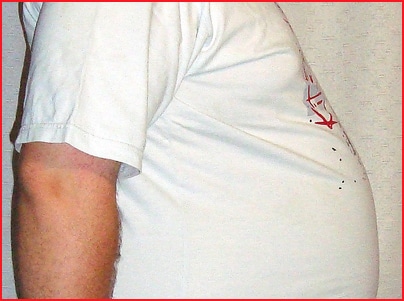
Journalist Frances Childs was an obese teenager, with stomach and thighs marked by purple stretch marks, wearing long full skirts to school because no store carried jeans in her size. Childs says:
So, when I see fat children, I know how they feel: uncomfortable and ashamed in their own bodies. It’s a shame that never quite leaves you.
Recently, Childs reflected for the Daily Mail on shopping experiences that brought to her attention the existence of “enormous” children. The famous Marks & Spencer store, she found, stocks plus sizes for kids as young as three. A retail research expert told her that one out of four women in Great Britain wears a “plus” size, and their children just keep getting bigger. One-quarter of the kids are overweight or obese by the age of four.
Manufacturers and retailers rely on such tactful synonyms as “wider,” “broader,” “fast-growing,” and “robust.” Childs speaks of the “generous fit” concept:
It’s children’s clothing comes in huge sizes — a five-year-old girl in ‘generous fit’ would be the size considered normal for children twice that age.
But a Forbes article did not mince words in predicting that “overweight children may be the next cash crop for retailers.” Childs says that when Marks & Spencer first introduced plus sizes for grade school children in 2010, there was a certain degree of public protest:
The idea that young children were so fat they needed plus-size clothing, a concept more usually associated with obese adults, was met with consternation. Two years on, however, and plus sizes in children’s clothes is the norm.
The provocative title of Childs’ piece is, “Are super-size clothes making children fatter?” When appropriate clothing is available, does this encourage and condone childhood obesity, along with all the concomitant health dangers? Some call this the regrettable normalization of a serious problem. Is society tacitly endorsing suicidal behavior?
Already there are shops specializing in clothes for big kids. Is this a good or a bad thing? Sincere and caring people argue on both sides. What business does a young boy have with a 46” waist? How can anyone be near a young girl with a 40” chest, and not feel the need to do something more urgent than locate a plus-size clothing store?
On the other hand, what good does it do to be judgmental? If the manufacture of large clothes for children and teenagers were forbidden, whose life would be improved by that kind of regimentation?
The writer quotes manufacturer Vanessa Fowler who says, with perhaps unconscious humor:
There is a huge demand for larger sizes in children’s clothing.
Fowler goes on to say:
It’s crucial that bigger children aren’t made to feel different. All children, whatever their shape or size, deserve to have a decent, well- fitting pair of jeans or a pretty dress.
A counter opinion comes from British expert Tam Fry, of the National Obesity Forum and the Child Growth Foundation:
There is an entire industry springing up around obesity, one that seems designed to make being hugely overweight acceptable in a way smoking or binge drinking isn’t.
Childs, the formerly fat teenager, ultimately comes down on the side of deploring this trend, saying:
Yes, parents have a responsibility to stop their children getting fat, but it’s made a whole lot harder if the rest of society is making it very, very easy to have a chronically obese child… Making plus sizes for adults who haven’t got the self-control not to gorge themselves into morbid obesity is one thing, but plus sizes for children are sickening.
Your responses and feedback are welcome!
Source: “Are super-size clothes making children fatter?…,” DailyMail.co.uk, 09/09/12
Image by FBellon.

 FAQs and Media Requests:
FAQs and Media Requests: 











